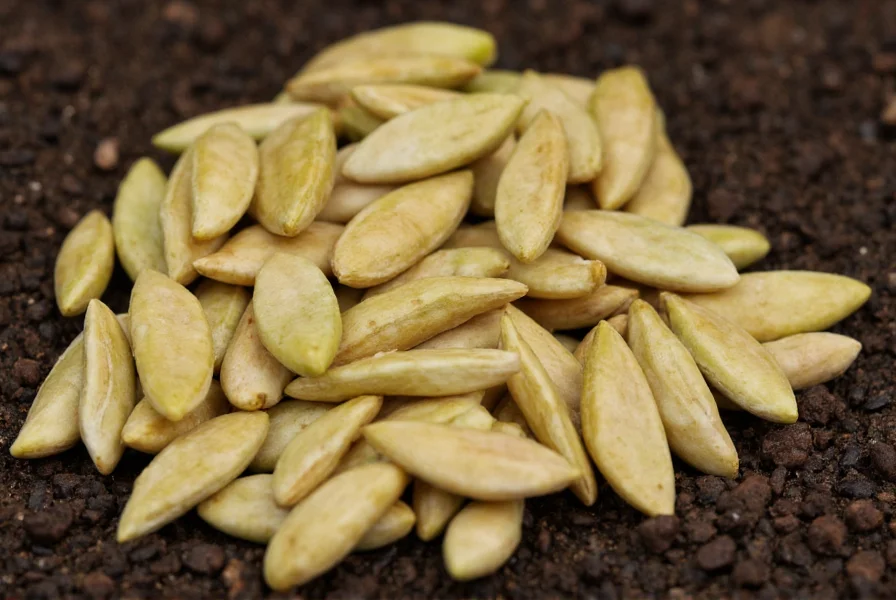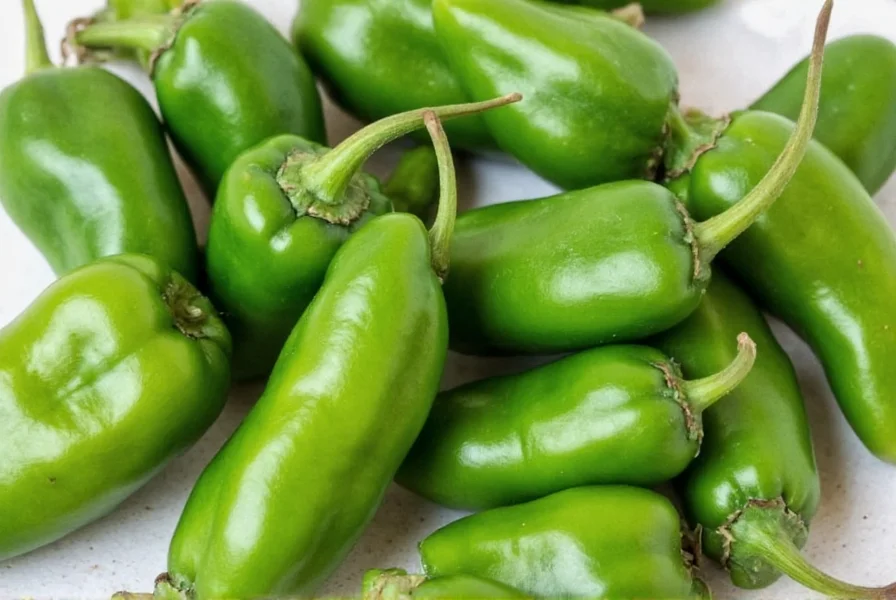Poblano pepper seeds germinate best at 75-85°F (24-29°C) with consistent moisture, typically sprouting within 7-21 days. These large, flat seeds produce mild to medium-heat peppers ideal for roasting, stuffing, and making traditional dishes like chiles rellenos. For optimal results, start seeds indoors 8-10 weeks before your last frost date in well-draining soil with 1/4 inch planting depth.
Understanding Poblano Pepper Seeds and Their Growing Requirements
When planning your garden, poblano pepper seeds offer a versatile option for home growers seeking flavorful, moderately spicy peppers. Unlike hotter varieties, poblano seeds produce peppers ranging from 1,000-2,000 Scoville units, making them accessible for most palates while delivering rich, earthy flavor perfect for Mexican cuisine. The seeds themselves are notably larger than many other pepper varieties, with a flat, teardrop shape and light tan color when mature.
Successful cultivation begins with understanding the specific needs of poblano pepper seeds. These seeds require warm soil temperatures for proper germination—anything below 60°F (15°C) significantly reduces germination rates. Many gardeners make the mistake of planting too early in cold soil, resulting in poor germination or weak seedlings. For best results, use a heat mat to maintain consistent soil temperature during the germination phase.
| Growing Stage | Optimal Temperature | Timeline | Key Requirements |
|---|---|---|---|
| Germination | 75-85°F (24-29°C) | 7-21 days | Consistent moisture, darkness |
| Seedling Growth | 70-80°F (21-27°C) | 6-8 weeks | Bright light, careful watering |
| Transplanting | Day: 75-85°F Night: >55°F |
After last frost | Hardened off seedlings, rich soil |
| Flowering/Fruiting | 75-90°F (24-32°C) | 65-80 days after transplant | Adequate water, balanced fertilizer |
Selecting Quality Poblano Pepper Seeds
Not all poblano pepper seeds deliver the same results. When choosing seeds, look for varieties specifically labeled as "Capsicum annuum 'Poblano'" to ensure authenticity. Many gardeners searching for "how to grow poblano pepper seeds" don't realize that some seed companies sell mislabeled products. Reputable seed suppliers provide germination rates (typically 70-90% for fresh poblano seeds) and harvest information.
Consider whether you want heirloom or hybrid varieties. Heirloom poblano pepper seeds preserve traditional characteristics but may have slightly lower disease resistance. Hybrid varieties often offer improved germination rates and disease resistance while maintaining the characteristic poblano flavor profile. For gardeners interested in "saving poblano pepper seeds for next year," heirloom varieties are essential since hybrid seeds won't produce true-to-type plants.

Step-by-Step Guide to Planting Poblano Pepper Seeds
The "best time to plant poblano pepper seeds" depends on your climate zone. In most regions, start seeds indoors 8-10 weeks before your last expected frost date. This timing ensures seedlings reach appropriate size (6-8 inches tall with multiple sets of true leaves) when outdoor conditions become favorable.
Follow these steps for successful planting:
- Use a seed starting mix rather than regular garden soil for better drainage
- Plant seeds at 1/4 inch depth—deeper planting often prevents germination
- Maintain consistent moisture (not soggy) using a spray bottle
- Cover trays with humidity domes to retain moisture during germination
- Provide 14-16 hours of bright light daily once seedlings emerge
- Transplant to larger containers when first true leaves appear
Many gardeners encounter difficulties with "poblano pepper seed germination temperature" requirements. Unlike some vegetables, pepper seeds need consistent warmth—not just daytime warmth but consistent soil temperature day and night. A heat mat set to 80°F (27°C) significantly improves germination rates compared to room temperature.
Troubleshooting Common Poblano Seed Growing Problems
Even experienced gardeners face challenges with "common problems with poblano pepper seeds." Here are solutions to frequent issues:
- Slow or no germination: Check soil temperature—poblano seeds won't germinate well below 70°F (21°C). Older seeds (over 2 years) have significantly reduced viability.
- Leggy seedlings: Indicates insufficient light. Provide brighter light source or reduce ambient temperature to 70°F (21°C) to slow excessive growth.
- Damping off: Caused by fungal pathogens in overly wet conditions. Use sterile seed starting mix and avoid overwatering.
- Poor fruit set: Often due to temperature extremes—peppers won't set fruit when daytime temperatures exceed 90°F (32°C) or nighttime temperatures drop below 60°F (15°C).
For those wondering "how long do poblano pepper seeds take to germinate," the answer varies by conditions. Under ideal circumstances (80°F soil temperature, proper moisture), you may see sprouts in 7 days. In less optimal conditions, germination can take up to 3 weeks. Patience is essential—don't discard trays too early.

Harvesting and Seed Saving Techniques
Poblano peppers typically mature 65-80 days after transplanting. They're ready for harvest when they reach 4-6 inches long and develop a deep, glossy green color. For dried peppers (ancho chiles), allow fruits to ripen fully to red on the plant before harvesting.
If you're interested in "saving poblano pepper seeds for next year," follow these steps:
- Choose fully ripe, red poblano peppers from healthy plants
- Cut peppers open and scrape out seeds with a spoon
- Rinse seeds thoroughly to remove pulp
- Spread seeds on paper towel in single layer
- Dry in well-ventilated area for 2-3 weeks
- Store in labeled envelope in cool, dark, dry place
Properly stored poblano pepper seeds maintain good viability for 2-3 years. Test older seeds by placing 10 seeds on a damp paper towel in a sealed bag—if fewer than 7 germinate after 2 weeks, consider purchasing fresh seeds.
Frequently Asked Questions
How deep should I plant poblano pepper seeds?
Plant poblano pepper seeds at 1/4 inch depth in seed starting mix. Planting too deep is a common reason for poor germination, as these seeds need proximity to the soil surface for successful sprouting. Cover lightly with soil and maintain consistent moisture until germination occurs.
Can I plant poblano pepper seeds directly in the garden?
While possible in long-season climates, planting poblano pepper seeds directly in the garden is generally not recommended. These seeds require warm soil (75-85°F) for proper germination, which typically occurs several weeks after the last frost. Starting seeds indoors gives you a significant head start and increases your chances of a successful harvest.
How long do poblano pepper seeds remain viable?
Properly stored poblano pepper seeds maintain good germination rates for 2-3 years. Store seeds in a cool, dark, dry place in an airtight container. After 3 years, germination rates decline significantly. Test older seeds with a simple germination test before planting a full crop.
What's the ideal soil pH for growing poblano peppers from seed?
Poblano peppers grow best in slightly acidic to neutral soil with a pH between 6.0 and 7.0. Test your soil before planting and amend as necessary. For container growing, use a high-quality potting mix designed for vegetables, which typically has the appropriate pH balance for pepper seedlings.
How many poblano pepper seeds should I plant per hole?
Plant 2-3 poblano pepper seeds per hole when starting indoors, then thin to the strongest seedling after true leaves develop. This approach compensates for potential germination failures while ensuring you get viable plants. When transplanting to the garden, space plants 18-24 inches apart in rows 24-36 inches apart.











 浙公网安备
33010002000092号
浙公网安备
33010002000092号 浙B2-20120091-4
浙B2-20120091-4